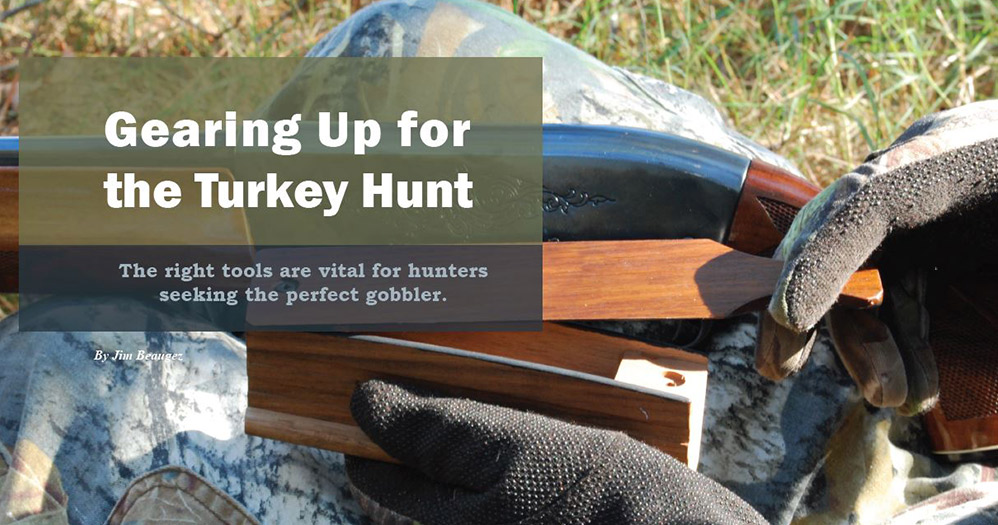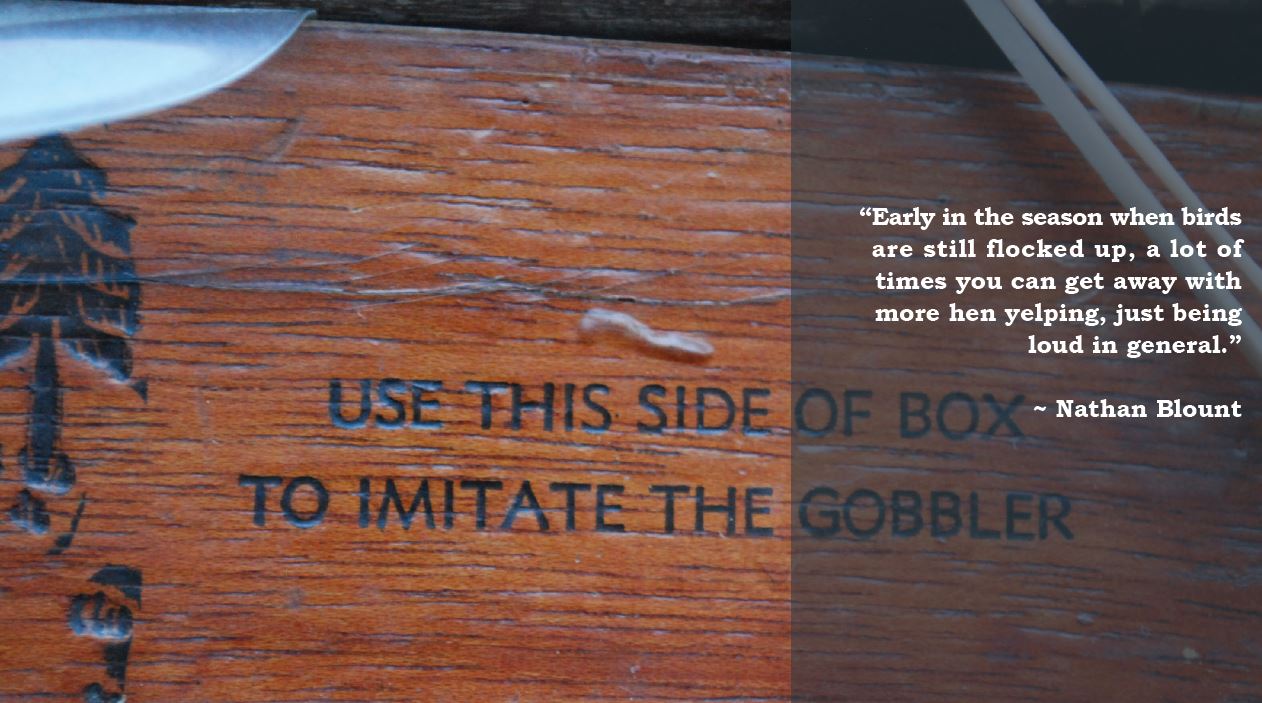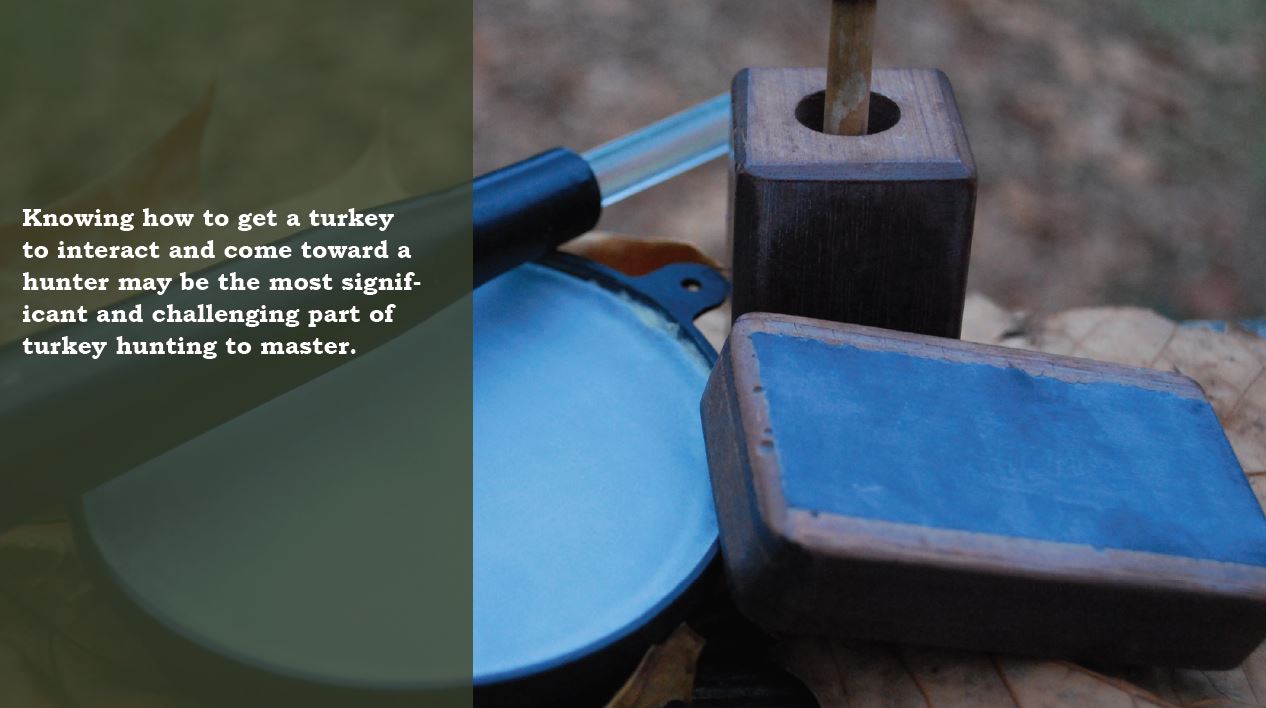Gearing Up for the Turkey Hunt
3/15/2018 2:14:46 PM
By Jim Beaugez

Turkey and deer may roam the same woods and forage for acorns and grasses from many of the same hardwoods and food plots, but hunting them could not be more different.
For starters, they both have their strengths and weaknesses in the wild. While deer rely heavily on smell and movement, turkeys have sharp hearing and full-color vision. Getting around these keen senses requires hunters to prepare in extraordinary ways.
The style of hunting is different, too. Deer activity can sometimes be random and one-sided, but a turkey hunt hooks hunters with back-and-forth interaction between the hunter and the bird.
“With turkeys, you can go out and actively seek the animal,” said Nathan Blount, a Mississippi Department of Wildlife, Fisheries, and Parks (MDWFP) Wildlife Management Area Biologist for the northeast region and an avid turkey hunter. “The correspondence with the bird is what has me enthralled in it, and every situation is different. You never say a turkey won’t do something because as soon as you say that, he’s going to do it.”
Turkey hunting is a game of wits and skill, a competition to coax a reluctant gobbler to abandon his roost or position in pursuit of a hen. Such an obsession has inspired vast options for calling and harvesting turkeys, including successful Mississippi companies to smaller outfits.
Sorting through the mix and resisting—or recovering from—gear-acquisition syndrome is a natural part of the turkey-hunt-ing process. Knowing which calls to use and when to use them is a matter of experience through trial and error.

“To me, the joy and reward of turkey hunting is the learning curve that goes along with trying to figure out when to do certain things and when not to do certain things,” said Adam Butler, MDWFP Turkey Program Coordinator.
Traditional friction-type calls are good for locating turkeys, and they are also typically the easiest calls to start with, noted Butler. The most common variations are the classic wooden box call and pot calls, which include a striker and a surface often made from slate, glass, or aluminum. These calls are versatile, allowing hunters to mimic the cluck of a hen or the kee-kee run, a series of yelps made by young or lost turkeys trying to locate their flock.
Diaphragm-based mouth calls are more advanced but can also yield convincing results. Hunters position the small, thin call against the roof of their mouth and manipulate the reeds to make a variety of turkey sounds. Mouth-call reeds can have unique cuts or shapes, which are designed to produce a range of sounds and work with different mouth contours.
The types of calling hunters choose can also depend on the time of year, whether they are hunting in fall or spring season, or whether they are hunting early or late in the season.
“Early in the season when birds are still flocked up, a lot of times you can get away with more hen yelping, just being loud in general,” said Blount. “You’ll hear the turkeys talk more in early season than later in the season when they’ve locked up. They’ll call more on the roost.”
It may be easier to get turkeys to talk early in the season before they are “henned up” or pressured too much, but, as Butler said, every turkey has its day. Butler once pursued a wary gobbler for two years after seeing only his tracks, usually paired with hen tracks, without hearing or seeing him. Then one morning, he heard him gobbling enthusiastically. Butler worked a simple series of 10 to 20 yelps, repeatedly, and the mature bird came right to him.
“I learned that every bird has his day,” said Butler. “If you catch a gobbler on the right day, even if he’s an old tough one and especially if he’s away from his hens or his hens have already nested, you can convince him. For a long time, I suspected he was in there but I never had any action with him, and the one day I did it just worked out perfect.”
Choosing the right type of call for a hunter to use mostly comes down to personal preference. Despite all the offerings, the pitch or timbre of the sound is far less critical than the cadence the hunter uses, which conveys attitudes and intent to turkeys.

“As far as realistically sounding like a turkey, you can do that with any of them,” said Butler. “If you (botch) the cadence and the rhythm, you’re not going to call in any turkeys.”
Knowing how to get a turkey to interact and come toward a hunter may be the most significant and challenging part of turkey hunting to master. Looking beyond the mental game and adrenaline, though, actually putting the bird on the ground is an entirely different challenge.
This part of the hunt focuses on the shotgun a hunter chooses, as well as the various ammunition types and aftermarket gadgets. The most popular gun, providing the best mix of power and range, is the 12-gauge. According to MDWFP, 90 percent of hunters in Mississippi use 12-gauges, with about 6 percent preferring 20-gauges.
Lead and copper-plated ammunition are the most common turkey loads, typically in numbers, 4-6 shot sizes. Relatively new alternatives such as tungsten cost more but offer greater accuracy at farther distances than traditional ammo. They also allow hunters to get better performance from the lighter, small-er-gauge guns.
“With some of the types of ammunition that are coming out now, the tungsten and stuff that is actually heavier and denser than lead, people are able to push smaller-gauge guns farther and get more out of them than they would’ve been able to even just five years ago,” said Butler.
“With some of the hand loads and specialty blends you can buy over the counter, I’ve heard of people getting performance out of 20-gauges that is as good as the old base 12-gauge performance.”
The density and pattern of shotgun pellets are more critical than shot size when the target is only a few inches in diameter. AAftermarketchokes that fit onto the end of a shotgun concentrate the shot pattern over a farther distance than the gun could otherwise produce.
With all the options available, Blount recommends hunters first try their shotgun’s factory setup, and then experiment with chokes and a few load types and sizes to gauge the differences. Some turkey hunters add new sights or even low-powered scopes to improve accuracy.
“Try two or three different loads, and just pattern them at about 40 yards,” said Blount. “You want at least 100 pellets in a 10-inch circle, uniformly spaced at 40 yards. That’s a good starting point.”
Finding the sweet spot among all the various ways to call and harvest a turkey is vital, and nearly always personal.
“Over time, with enough encounters, each person will sort of develop their own style, their own method, and then they will discover what works best for them in that particular situation,” said Blount. “You’re always learning.”
Jim Beaugez is a freelance writer for Mississippi Outdoors.









